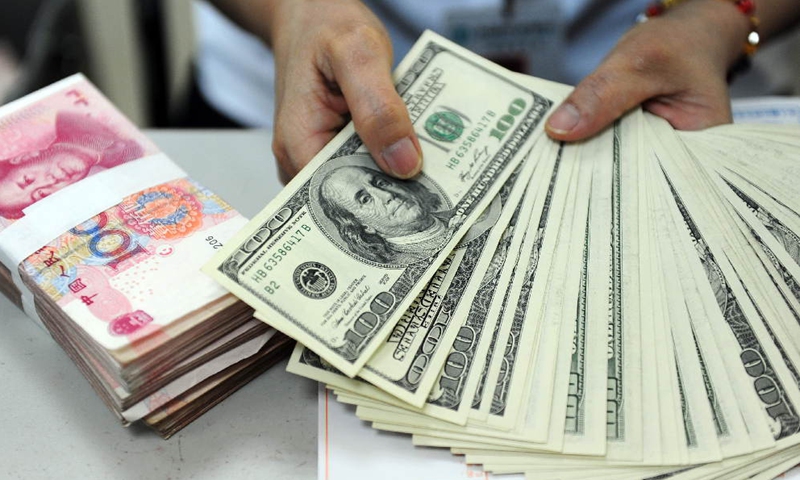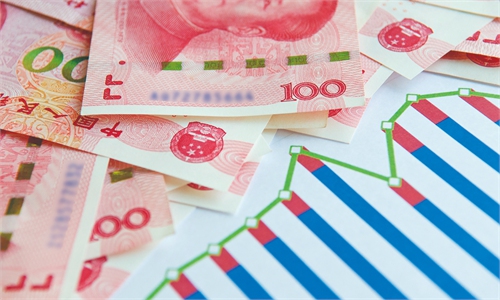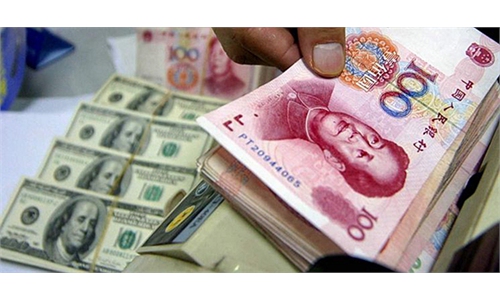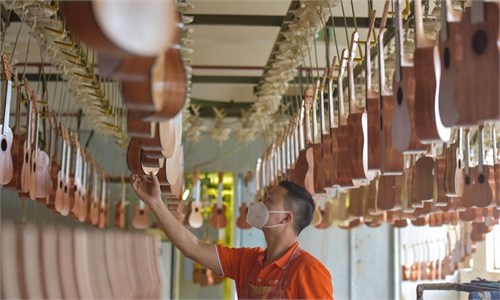Yuan weakens to around 6.72 per dollar; central bank has tools to manage fluctuations

A staff member counts banknotes at a bank in Qionghai of south China's Hainan Province.(Photo: Xinhua)
The onshore yuan weakened by more than 500 basis points (bps) to 6.72 against the dollar during intraday trading on Monday to hit its lowest point since November 2020, following the US Federal Reserve’s move to hike interest rates.
The official central parity rate of the yuan weakened 567 bps to 6.6899 against the dollar, according to the China Foreign Exchange Trade System.
However, analysts said that the Chinese central bank has a variety of tools to maintain the yuan’s exchange rate within a reasonable range, while China's solid economic fundamentals will support a stable yuan in the long term.
The current volatility is also correlated with China’s current economic downward pressure caused by Omicron lockdowns in cities like Shanghai, Zhengzhou and parts of Beijing.
The dollar continues to gain strength thanks to the Fed’s accelerated pace in raising interest rates to tame surging inflation, Dong Shaopeng, a senior research fellow at the Chongyang Institute for Financial Studies at Renmin University of China, told the Global Times on Monday. In April, the US dollar index rose to 103.05, the highest level since January 2017.
However, there is no basis for long-term depreciation of the yuan, Dong said, noting that China’s economic fundamentals – characterized by strong resilience and enormous potential – remain unchanged, and the yuan will stay stable in the long run.
Despite the headwinds of COVID-19 resurgences, supply chain snags and external uncertainties including the Ukraine crisis, China’s economy posted 4.8 percent year-on-year growth in the first quarter of 2022.
Experts recently interviewed by the Global Times said they are confident that the country will be able to achieve the annual economic growth goal of around 5.5 percent, with a policy mix including proactive monetary policy and fiscal stimulus.
UBS chief China economist Wang Tao said in a note sent to the Global Times that the yuan’s exchange rate may weaken further to below 7 per dollar over the coming months but will recover to around 6.9 by the end of the year, supported by an improvement in market confidence amid a rebound in China’s economic growth momentum.
“The yuan’s exchange rate against the dollar may strengthen to 6.7 in 2023 thanks to a projected rapid recovery in the economy and a weakening dollar then,” said Wang.
Wang said that the Chinese central bank has a basket of tools at its disposal to stabilize the yuan’s exchange rate or blunt its depreciation speed. The tools include further cutting foreign exchange reserve requirements, introducing a countercyclical factor in setting the yuan’s daily reference rate against the dollar and tightening regulation of capital flight.
On Monday, the People’s Bank of China stated that it will strengthen macro prudence management of cross-border capital flow in a bid to ensure normal foreign exchange market operations and keeping the yuan’s exchange rate basically stable.
As a preliminary signal to stabilize the yuan’s exchange rate, the central bank recently announced plans to cut foreign exchange reserve requirements for financial institutions by 1 percentage points to 8 percent in a bid to shore up their capacity to use foreign exchange funds.



